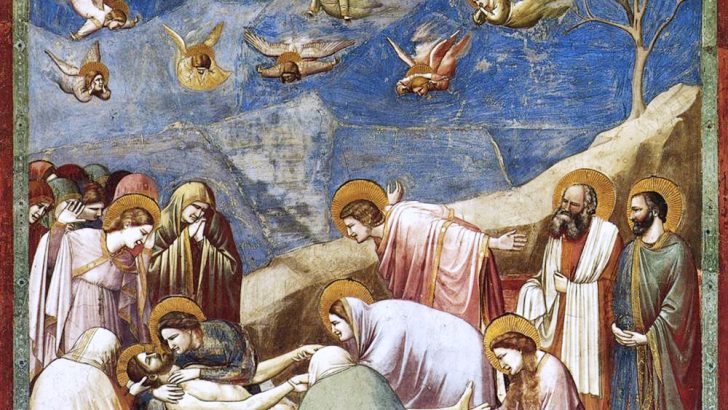Heaven on Earth: Painting and the Life to Come
by T. J. Clark (Thames & Hudson, £18.95)
British-born writer T. J. Clark is a Professor Emeritus of the History of Art at the University of California, Berkeley. His main field of interest has been 19th-Century French art, and such artists as Manet and Courbet, so this book represents something of a fresh departure.
He has been identified as a ‘Marxist’, but that merely means that he wishes to draw our attention to the social and economic circumstances in which art is produced, something that those who adopt a more aesthetic approach often dislike – despite the manner in which market value affects the appreciation of art.
Depictions
This new book deals, as the subtitle says, with “painting and the life to come”. This might seem to many to mean depictions of the beatific vision. But no; we cannot know what that is like theologians remind us, despite the visions of saints and such sages as Swedenborg in his Arcana Cœlestia. For Clark the life to come is a visionary expression of something better for humanity than what we have: famine, plague, war and death.
The introduction and the finale are indeed politically orientated, but the substance is a set of essays on Giotto, Brueghel, Poussin and Veronese, rounding off with a Picasso work in the UNESCO building in Paris.
These are full of interest: the Poussin essay with a long discussion of the Catholic doctrine of the efficacy of grace as expressed in his series on the Sacraments, and the nature of his belief contrasted with Giotto’s.
This book deals in detail with some of the world’s most arresting images”
One need not agree completely with Clark’s views to gain many insights from this book. For instance, interesting as what he says about Brueghel is, yet one feels more would have been gained by relating the painter’s images of life to the imagination of Rabelais. But the French author, like so many other authors who would provide a context for the artists discussed, is not mentioned at all.
However the book is pervaded by a sense of Marxist melancholy. With the decline of that philosophy, he seems to think there is no hope of a future for the Left, or indeed any political view.
But this book in presenting this view fails entirely to address the worldwide ecological movement (to which Pope Francis has notably contributed). There is no hope for a Marxist future. But the human spirit will, perhaps through new ideas of society and art, find out a future, but a future very different from ‘the normal life’ so many ache to return to – which for many in the world was far from a normal human existence.
That this book in dealing with ideas of the future life here on Earth fails to speak about the ecological movement explains a great deal about the overall political failure of Marxism.
But the melancholy apart, this is a book that deals in detail with some of the world’s most arresting images. The chapter on Giotto, for instance, caught my deep attention, having recently visited the Arena Chapel in Padua and seen that painter’s great work of many images, ‘Last Judgement’, which fills the whole room – he is truly a remarkable painter.
The saddest image in the book is not a painting, but a photograph of the concourse of the UNESCO building in Paris, which shows Picassos’ ‘Fall of Icarus’, almost entirely screened from view by the massed concrete segments of the brutalist architecture – the imagination of the painter entirely overpowered. This photo, just in itself, is an allegory of the artist in modern times.


 Peter Costello
Peter Costello Lamentation by Giotto di Bondone in the Scrovegni Chapel, c. 1305
Lamentation by Giotto di Bondone in the Scrovegni Chapel, c. 1305